- Home
- Michael Newton
How to Write Action Adventure Novels Page 14
How to Write Action Adventure Novels Read online
Page 14
They had battered out her front teeth and committed awful atrocities upon the once lovely torso, and what they had done below that point sent Bolan’s usually steady mind on a spin through insanity.
His chin dropped to his chest, his eyes closed on the terrible scene, and he groaned, “Oh … God!”
Then he went down to the screeching man and shoved the hot muzzle of the chattergun into the wide open mouth and he pulled the trigger and let the gun burp until the clip was empty, and somewhere in there the screaming stopped. He dropped a marksman’s medal into the gaping well of blood, and reloaded, and went deliberately from body to body and repeated the routine.
A few pages later, Bolan launches a blitz against the New York “family,” which is subdued by comparison, and seasoned with a cautious touch of humor:
Twenty minutes later he struck again, this time at the Manhattan offices of Schweiberg, Fain, and Marksworth—purportedly an investment brokerage firm but actually the funnel through which Gambella’s illicit wealth was spread into the legitimate business world. The firm went abruptly out of business at 11:22 a.m. that Wednesday in December, the partnership dissolved by mutual death, its records consumed by a fire of incendiary origin. Again, a tall man in army fatigues and an OD field jacket pressed a marksman’s medal into the shaken palm of a female employee before he calmly departed the scene.
At a few minutes past noon, in the back room of a neighborhood restaurant on 144th Street, a weekly “business luncheon” of the Upper Manhattan Protective League was disrupted by an obvious lack of protection. This group, consisting of neighborhood politicians and muscle-men, was severely depleted of active membership by the sudden appearance of two fragmentation grenades on the menu. A tall man in army combat dress settled the property damages with a thousand dollars in cash and a marksman’s medal.
Whenever possible, I try to find a happy medium between anatomy and art. I won’t pretend it always works, but practice makes its easier, as in the following encounter from Doomsday Disciples (Gold Eagle, 1983):
Bolan took the nearest gunner first, his Beretta chugging out a pencil line of flame. The 9mm parabellum sizzled in on target, punching through a tanned cheek under the right eye, expanding and reaming on, exiting with a spray of murky crimson. The impact spun him like a top and dumped him facedown on the carpet.
His partner had an autoloader out and tracking Bolan when Belle coughed a second time. The gunner lurched backward as a parabellum mangier pierced his throat, releasing a bloody torrent from his ruptured jugular. For an instant he was frozen, gagging on his own vital juices; his lips worked silently, emitting scarlet bubbles.
Bolan again stroked the trigger and again silent death closed the gap between them, exploding in the gunner’s face. A keyhole opened in his forehead and the lock was turned, explosively releasing all the contents of that dark Pandora’s box. Bits and pieces of the guy were outward bound before his body got the message, rebounding off the sofa on its way to touchdown.
Mayhem Mechanics
Several pitfalls are commonly encountered in construction of a violent scene, and would-be authors ought to recognize each one of them on sight. Resort to formulaic, set-piece at established intervals throughout a story may appear to give your manuscript a certain balance, when, in fact, it merely makes the tale predictable and dull. It’s fine to have your hero face a hostile army every now and then, but if he does it every other chapter, making his escape like clockwork, readers will experience a nagging sense of déjà vu.
Another common blunder is the overuse of certain “catchy” words or phrases to distinguish action scenes. Let’s examine a classic fumble from The Ninety-Nine (Gold Eagle, 1984):
Track dropped the shotgun to hip level and rammed the five rounds from his Perry sling, one at a time, into the magazine tube. He guessed blindly that the tube had six rounds left. He tromboned the pump, shouldered it again and sighted over the front blade. He fired, tromboned; fired, tromboned; fired, tromboned; fired.
He wheeled half left. Two of the nearest Bedouin horsemen broke off to outflank him. Their assault rifles spit orange tongues of flame, and the slugs kicked up sand at his feet. He tromboned the pump, fired—one horseman down; then tromboned the action again, firing—the second rider down. Track pumped the action, and the red high-brass shell sailed out of the ejection port. Nothing in the chamber. [Emphasis added.]
Now, don’t get me wrong. I’ve got nothing against the trombone, but this is overkill. Afraid some readers may have missed his point, the author takes a clever turn of phrase and hammers it into the ground. By the end of the second paragraph, he’s beating a dead horse.
Another frequent failing is the amateurish fallback into “cartoon” violence, characterized by impossible leaps and kicks, miraculous trick shots, or guns with inexhaustible supplies of ammunition. You don’t need a Ph.D. in math to know a weapon holding twenty rounds won’t stop a hundred men without reloading several times, and if your hero’s stopped a bullet in the chest, he shouldn’t plan on running any marathons.
The flip side of the cartoon syndrome is compulsive technicality, with authors reeling off the caliber and model number, muzzle velocity and magazine capacity for every gun in every scene. It’s nice to add a touch of authenticity from time to time, but no one wants to sit and read a catalogue of MAC 11s, M-16s and AK-47s, RPGs, SPAS-12s, and Model 1911A1s. Before you lose your story—and your readers—in a cloud of nomenclature, take a break and call a spade a spade … or, call a gun a gun.
Shopping for Hardware
Speaking of firearms, you don’t have to be a gun buff or a combat veteran to write successful action scenes, but if you’re ignorant concerning weapons, you will have to cure your deficiency through homework. Do it now, before your readers start bombarding editors with post cards pointing out the errors in your work.
You think I’m kidding? Bear in mind that many members of your audience are military veterans or law enforcement officers. They know their hardware inside out, and they are not above complaining when an author gets the details wrong. It’s easy for an editor to miss a small mistake in nomenclature, caliber—whatever—but your readers don’t miss anything.
I grant you, firearms technicalities may not seem crucial to the story, but they add up, all the same. When Adam Lassiter, in Triangle, makes reference to the “two firing handles” on an M-60 machine gun, it sounds convincing. Unfortunately, there is no such mechanism on the weapon, as the author could have learned by simply glancing at a photograph. When Mark K. Roberts has a Russian AK-47 rifle firing 5.56mm rounds, midway through Jakarta Coup, it’s no big deal—except to fans who know damn well the weapon chambers 7.62, instead. They mull the passage over for a while and grumble to themselves—and some of them sit down to write the publisher in protest. Again, I’ve never heard of any writer being canned for careless errors, but enough of them will definitely blow your reputation as a master of your craft.
I wish I had a dime for every time I’ve caught a character in “brand name” novels playing with the safety switch on his or her revolver. Why? Because there’s no such thing! I’m sorry, folks, but it’s a fundamental fact of life: revolvers don’t have safeties; automatics do. And while we’re on the subject of impossibilities, you cannot detonate a stick of dynamite by firing at it with a gun. What’s that? You saw Clint Eastwood do it in the movies? Sorry, folks. Do not attempt this trick at home.
Another piece of hardware that has scuttled many authors is the so-called silencer. Professionals refer to these devices as suppressors, out of recognition for the fact that no effective firearms silencer has been invented. Certainly, they help to muffle gunshots, if attached correctly to the proper weapons, but you can forget about portrayals of the silencer in movies and on television. Sound-effects technicians have been working overtime to make those babies whisper. (When a gang of modern neo-Nazis murdered Alan Berg in 1984, they used a silencer. According to the transcripts of their trial, the weapon, made professiona
lly, still produced a sound like someone slamming down a heavy dictionary on a desktop.)
R. Lance Hill presents a fine, authentic-sounding picture of a silenced weapon in The Evil That Men Do (Bantam, 1978):
Having begun life as a quite ordinary Smith and Wesson Model 57 revolver in .41 magnum caliber, the firearm had then undergone more than a hundred hours of work in order for it to suit Holland’s exacting standards: fitted with a custom five-inch barrel, muzzle vented and sufficiently heavy to reduce recoil…
Also in the case was a silencer. Silencers by their proper designation are called “suppressors,” most being woeful devices severely hindering the effectiveness of the firearm they are coupled to, restricting the bullet’s velocity as well as adversely affecting the accuracy because of vibrations. They are deplored for fouling the gun barrel with spent powder, many not suppressing the report of the gun so much as redirecting the noise indiscriminately. However, the suppressor Holland employed was the latest in applied technology and not only did all that a suppressor was designed to do, but in practice actually enhanced the velocity of the bullet passing through its titanium embrace.
Convincing, right? Unfortunately, Hill is blowing smoke across the board. For starters, it’s impossible to “silence” a revolver, since the sound and flash of every shot escape through open space around the cylinder. Next problem: The description of a “vented” barrel simply means there have been holes cut near the muzzle, to reduce a weapon’s kick. If vents are covered by a silencer, they do no good, and if they’re not, the sound of every shot escapes as if there were no silencer in place. To round things off, Hill has a basic problem with his choice of ammunition. Many bullets travel faster than the speed of sound, like tiny fighter planes, and make another racket independent of their weapon once they leave the muzzle. No attachment can suppress this secondary noise, and so the active candidates for silencing are limited to guns that fire projectiles at subsonic speeds—that is, slower than 1,100 feet per second. Your average .41 magnum round leaves the muzzle at 1,500 feet per second, and Hill’s technology makes it travel even faster, indicating that his supergun should be about as quiet as a cannon in a closet.
If you’re a novice in the field of firearms, you can depend on countless sources to keep you on the straight and narrow once you’ve done your homework. Guns and Ammo is the best of several monthly magazines devoted to the shooting sports, including articles on new developments in weapons, ammunition, and the handling of same. The classic reference works are Small Arms of the World, now edited by Edward Ezell, and its companion volume, Sporting Arms of the World by Ray Bearse. Both provide comprehensive coverage of weapons available to civilians and military personnel, complete with ballistics tables, instructions for field stripping and cleaning, the history of firearms development, and so forth. Other handy volumes include David Rossner-Owen’s Vietnam Weapons Book, George Markham’s Guns of the Elite, and Frank Moyer’s Special Forces Foreign Weapons Handbook. Two volumes by Duncan Long, Combat Ammunition and Streetsweepers (a treatment of combat shotguns), round off the basic firearms library in fine style.
Weapons nomenclature may be half the battle, but your characters will still look silly if they don’t know how to handle all those M-14s, MAC 10s, and what-not. Personal experience is still the best foundation for authentic writing; if you’ve never fired a gun, you really ought to try it. Chances are your relatives or friends have hardware stashed away that you could borrow; if they don’t, some firearms outlets (like the Survival Store, in Las Vegas) rent weapons and range time to interested parties, offering instruction and supervision in the handling of anything from pistols to submachine guns.
Barring close encounters with a “real, live” gun, you can absorb a measure of the necessary knowledge secondhand. Jeff Cooper’s Principles of Personal Defense is a useful volume for beginners. Chuck Taylor has two useful books on the market: Combat Handgunning and The Combat Shotgun and Submachine Gun. For sniper tactics, consult Sniper/Counter Sniper by Mark Lonsdale. The techniques of street survival are examined by Massad Ayoob in Stressfire and its companion volume, In the Gravest Extreme.
Down and Dirty
Action, unlike Rap Brown’s definition of political power, does not always issue from the barrel of a gun. Your heroes may be forced to deal with villains hand-to-hand, and when they do, you must take pains to keep the combat scenes authentic. If you’re writing martial arts, you might consider signing up for classes—or at least observing some. Do not rely on wacky kung fu films or published fiction for your background information; both are riddled with inaccuracies and impossible performances by characters who leap around like Superman, defying gravity and every other law of nature as they take on armies single-handed. Every major bookstore carries manuals on martial arts, most often tucked away with the biographies of football stars and volumes on aerobics. If you’re looking for a little something “extra,” try Black Medicine, three volumes filled with lethal tricks, prepared by N. Mashiro.
Rounding off your education in the field of homicide, you should consider certain specialties. The Terrorist Explosive Handbook is a nifty volume, penned by Jack McPherson, that will fill you in on combat demolitions. Crossbows, edited by Roger Combs, provides an interesting alternative to firearms when you’re plotting that assassination scene. The handling of edged weapons is covered by David Steele, in Secrets of Modern Knife Fighting, and by Michael Echanis, in Knife Fighting and Throwing. Ragnar Benson surveys lethal snares in Mantrapping and The Most Dangerous Game.
If you decide on graphic wound descriptions in your fiction, first make sure you’ve got your physiology together. Know the proper names for organs, bones, and arteries before you start to throw the terminology around. (I still recall an episode of “Andy Griffith” where Don Knotts, as Barney Fife, discusses ailments of the “larnyx” and “medulla oblongala.”) Realism may require that you determine how fast individuals of given height and weight may bleed to death from a specific wound. Has anybody ever really died from being hit with such velocity that nasal cartilage was driven through the brain? Which muscles have been damaged when your hero takes a bullet in the upper thigh? The answers will be found in Gray’s Anatomy or any comparable text. I also recommend that you consult the leading homicide investigation manuals for text (and juicy photographs) depicting the results of gunshots, stabbings, strangulation, poisoning, incineration, and assorted other forms of lethal violence.
The Weaker Sex?
Sex—and sometimes plenty of it—is the other “problem” fact of life in action novels. Touching different nerves (I hope!) than homicidal violence, sexuality in genre fiction is approached by different authors and their editors in a variety of ways. Some publishers attempt to minimize the number of encounters, keeping all the hot-and-heavy action carefully offstage, while others cling to bedroom quotas, doggedly insisting on a minimum of three or four “wet” scenes per manuscript. As previously noted, readers in the genre aren’t unanimous in their reactions to the topic, either, but they come prepared to see their heroes strip for action every now and then.
Despite their relegation to subordinate positions in the “normal” action novel, women are a constant feature of the genre. They appear most commonly as damsels in distress or bedmates of selected male protagonists; assorted other “female” roles include the relatives of leading men (habitually placed in jeopardy, as variations of the damsel in distress), assorted secretaries, lab technicians, or computer operators, and assorted sexy spies who function smoothly “under cover.” Female victims frequently evolve into the role of lovers after being rescued by the hero of the moment, letting body language stand as an expression of their gratitude.
So much for tried-and-true clichés. As noted previously, action novels show a rising trend toward strong, decisive, independent female characters. They stand and fight beside their men—and, sometimes, carry out a ticklish mission without the benefit of male assistance. Shrinking violets are unlikely to be banished from the ge
nre (most especially since authors, editors, and readers are predominantly male), but there are indications that the tough new breed of female character is here to stay. Who knows? She may even be the wave of the future.
Working Under Cover(s)
The amount (and type) of sex in action novels varies widely with the taste of authors, editors, and publishers. In olden times, James Bond habitually found himself a lover—sometimes several—in the midst of every case, and thereby set the tone for his successors. In his debut novel, War Against the Mafia, Mack Bolan beds three women, but his luck is fragile. In the course of thirty-seven episodes from Pinnacle, he rarely scores again, and never in a graphic scene. Protagonists in other action series run a gamut from the likes of J. C. Stonewall, drooling over anything in skirts, to loyal, one- woman men like Edward X. Delaney.
Technical descriptions of The Act in genre fiction vary with the authors and the dramatic characters involved. While nothing is taboo, per se, an editor may limit your depiction of a graphic scene if it appears gratuitous, excessive, or inevitably destined to offend your audience. (Few novels focus on the graphic sexual abuse of children, for example, and your heroes probably should not display a fondness for the sadomasochistic joys of bondage.) Based on a perusal of the literature, it is apparent that your sex scenes need not be hard-core to be effective.
Notice how suggestive dialogue can sometimes serve in place of sweaty thrusting, as when Dean Koontz gives his characters a break in Twilight Eyes:
Rya pulled off her sopping tennis shoes and socks, then skinned out of her wet T-shirt. Beads of water glimmered and trembled on her bare arms, shoulders, breasts.

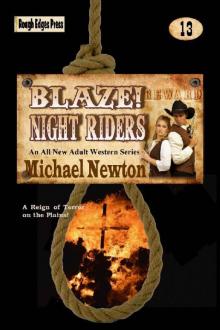 Blaze! Night Riders
Blaze! Night Riders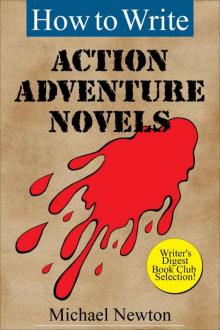 How to Write Action Adventure Novels
How to Write Action Adventure Novels Blaze! Bad Medicine
Blaze! Bad Medicine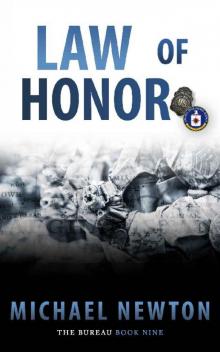 Law of Honor
Law of Honor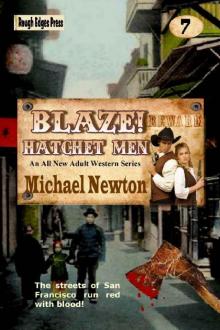 Blaze! Hatchet Men
Blaze! Hatchet Men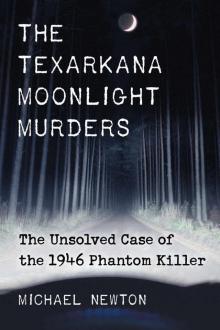 The Texarkana Moonlight Murders
The Texarkana Moonlight Murders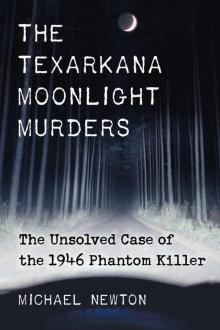 The Texarkana Moonlight Murders: The Unsolved Case of the 1946 Phantom Killer
The Texarkana Moonlight Murders: The Unsolved Case of the 1946 Phantom Killer